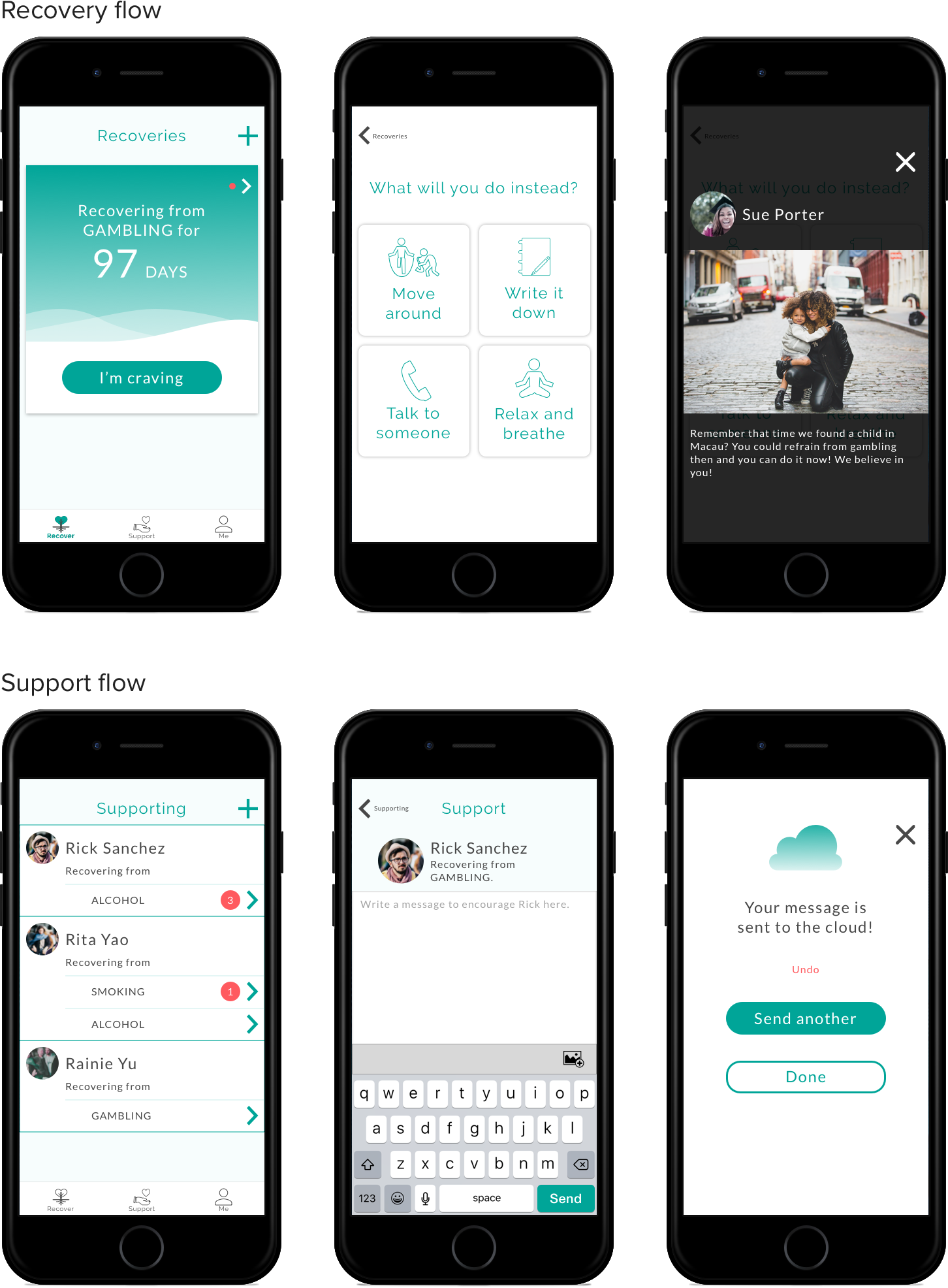



RecoverTogether is a social mobile application for treating addiction that focuses on replacing unwanted habits with healthy behaviors using positive reinforcement. By including micronetworks of intimate loved ones, addicts are reminded of the social circle that is supporting them through this endeavor.
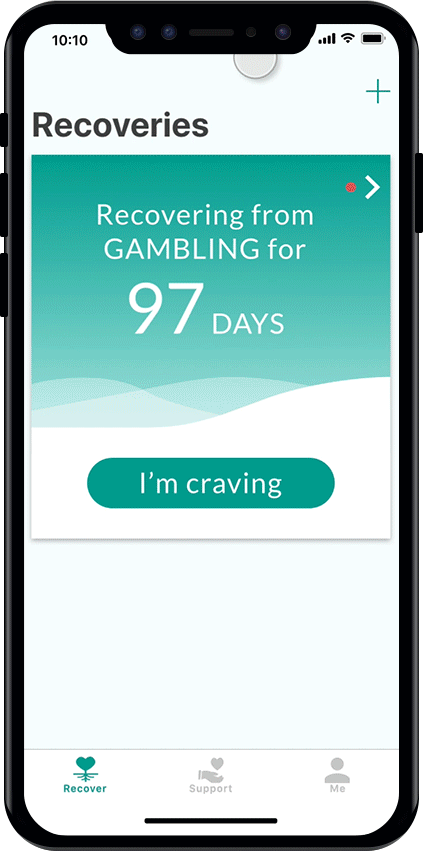
The typical assumption from rat studies is that drugs directly cause addiction and drug-seeking behaviors.
Dr. Bruce K. Alexander believed that the drug itself is not the main cause for drug-seeking behavior; rather, it is the isolation from society. In his 1977 experiment, he created a "Rat Park"" for a rat society to live in, complete with plants, food, toys, and morphine. He found that rats in isolation were 19x more likely to become addicted than the Rat Park inhabitants.
When rats sense a social circle, they are much LESS likely to become addicted.
Many people who are addicted to unwanted habits have difficulty motivating themselves to refrain from those habits because they feel isolated in their efforts.
The results from "Rat Park" imply that the lack of perceived society is a major cause for addiction. Thus, by providing a sense of social support to addicts, they will feel less isolated in their struggle and more motivated to quit.
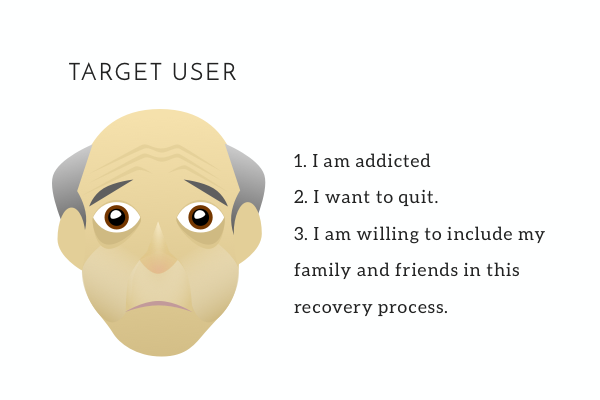
This approach is similar to AA's sponsor program, where addicts are assigned a sponsor for 24/7 social support. However, a system of spontaneous calling may be repetitive and unreliable.
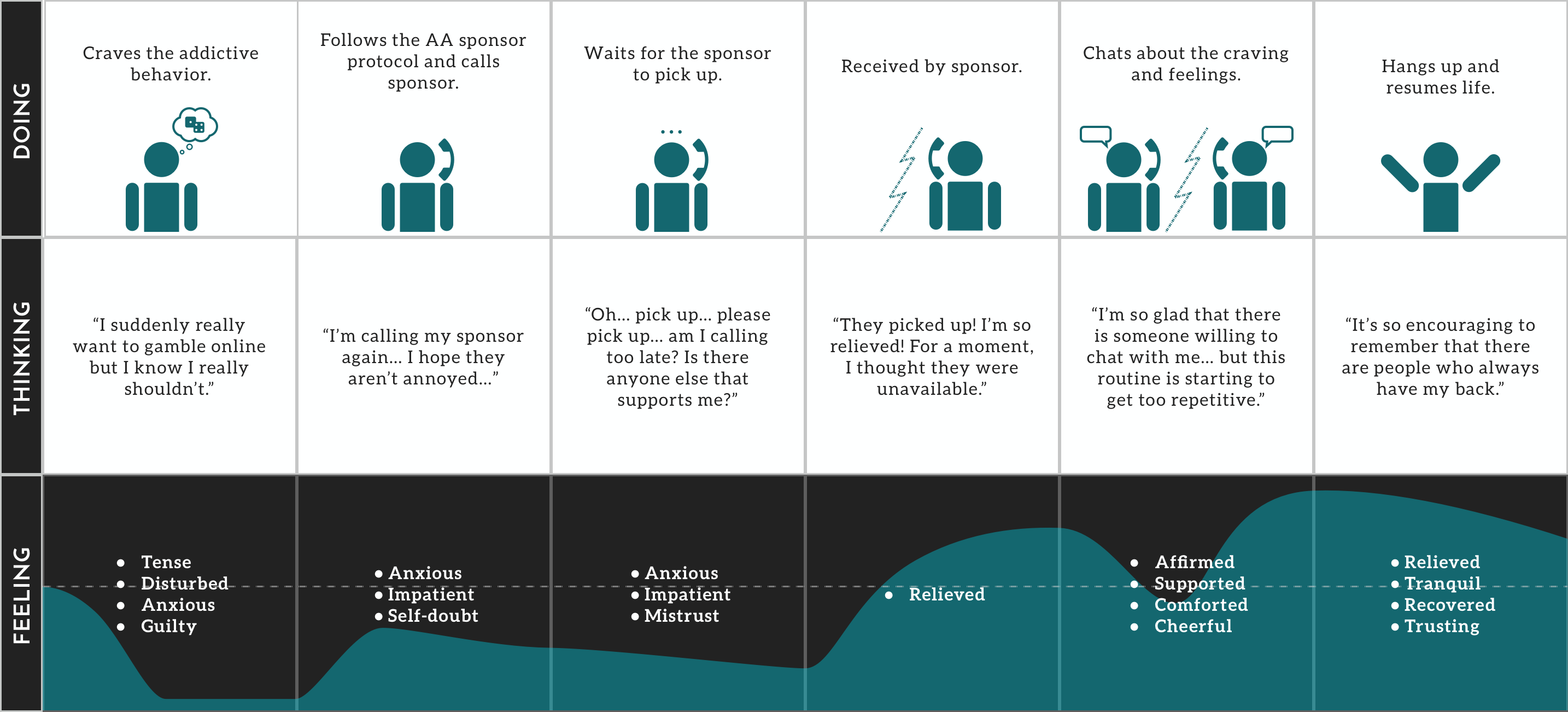
RECOVER TOGETHER
By offering a choice of alternative behaviors and interactive buttons to push, this process becomes more gamified and delightful.
More importantly, a system based off of stored messages always provides positive reinforcement, thus is more reliable.
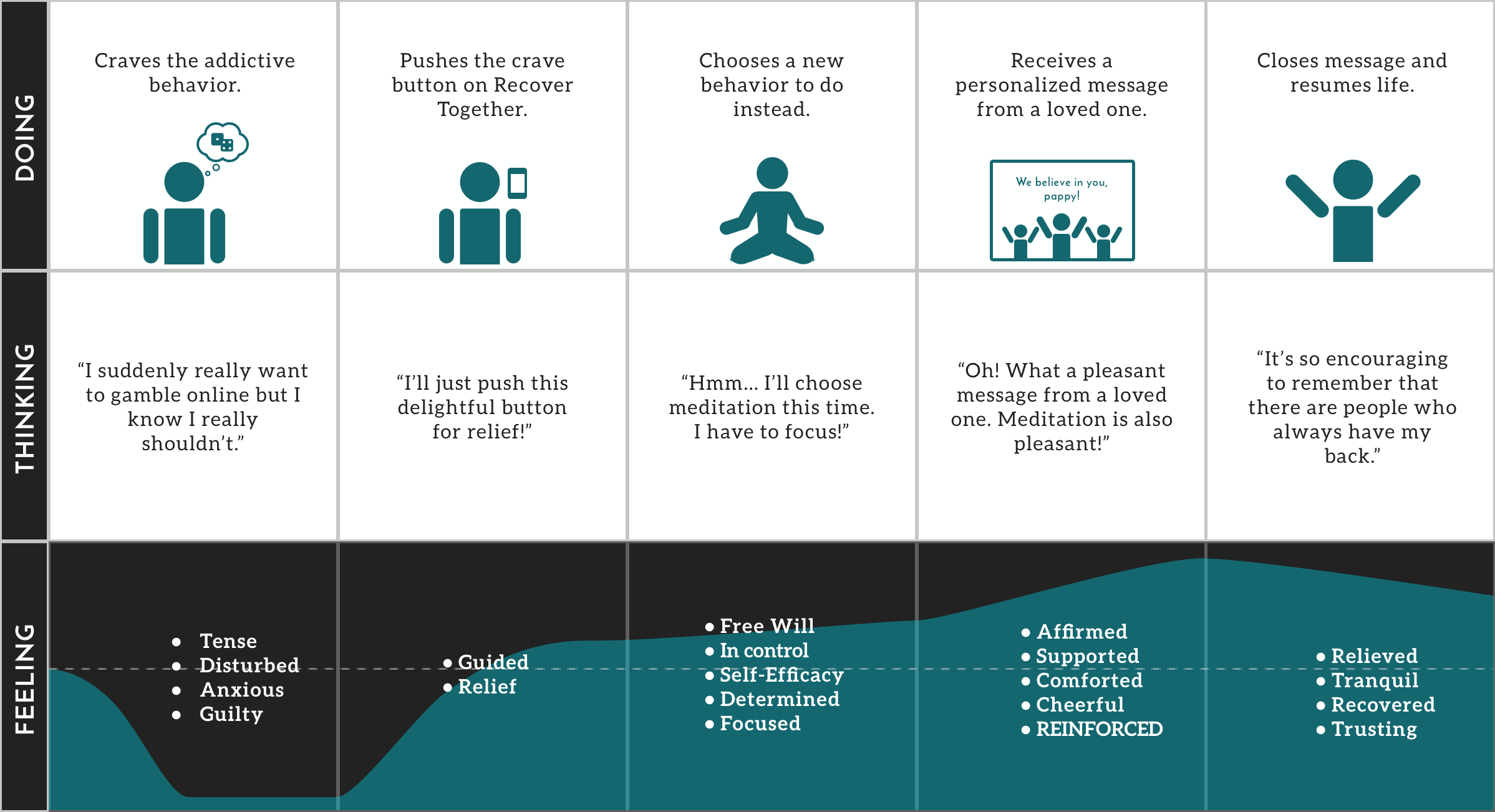
RESEARCH THE MARKET
For research, I performed market analyses on competitors and comparators. I also consulted with experts to assure that my techniques are according to psychological theory.
For competitive analyses, I evaluated apps such as iQuit, Quit That, ButtOut, etc. I found that all of these apps only focus on the individual, mainly trying to motivate the users with monetary incentives.
For comparative analyses, I drew inspiration from other social networking apps such as Facebook, Tinder, and WeChat.
FIRST ITERATION
My first design was very similar to existing habit-quitting apps. There is a focus on how much money is being saved refraining from habits. Then, they receive a message from their support network that is saved to their gallery.
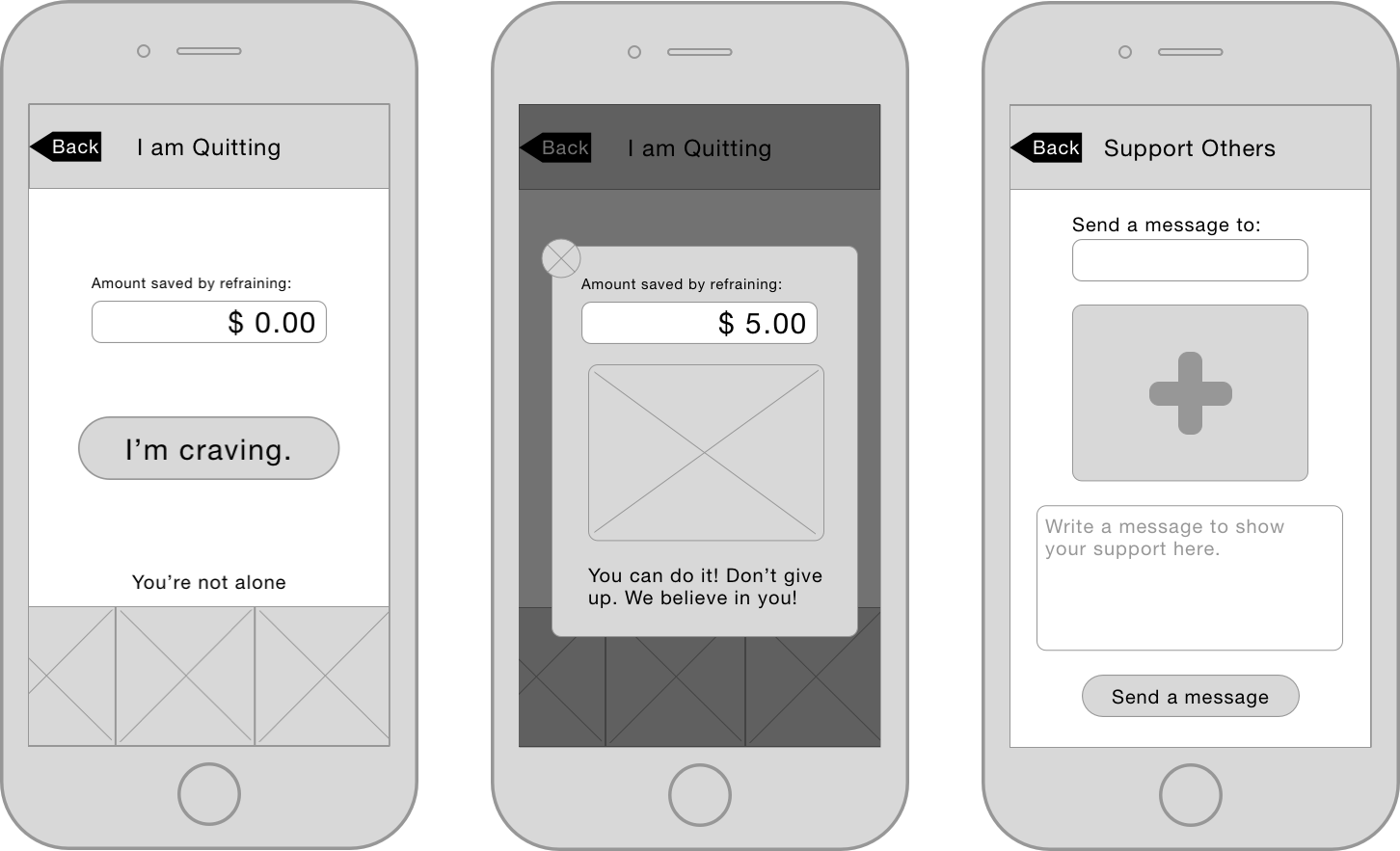
The psychologists on my team urged me to add a way for supporters to be notified immediately when the addict is craving because that is a proven technique used for addiction treatment. Therefore, I reorganized the information architecture to include a social network.
Based off of Dr. Urie Bronfenbrenner’s ecological systems theory, I decided to refocus the app on creating micronetworks between each addiction and the addict’s social circle.
SECOND ITERATION
For the second iteration, I added a tab navigation bar to the bottom that allowed for easy switching of user types (addict or supporter). I also added extra features that allowed for saved social networks.
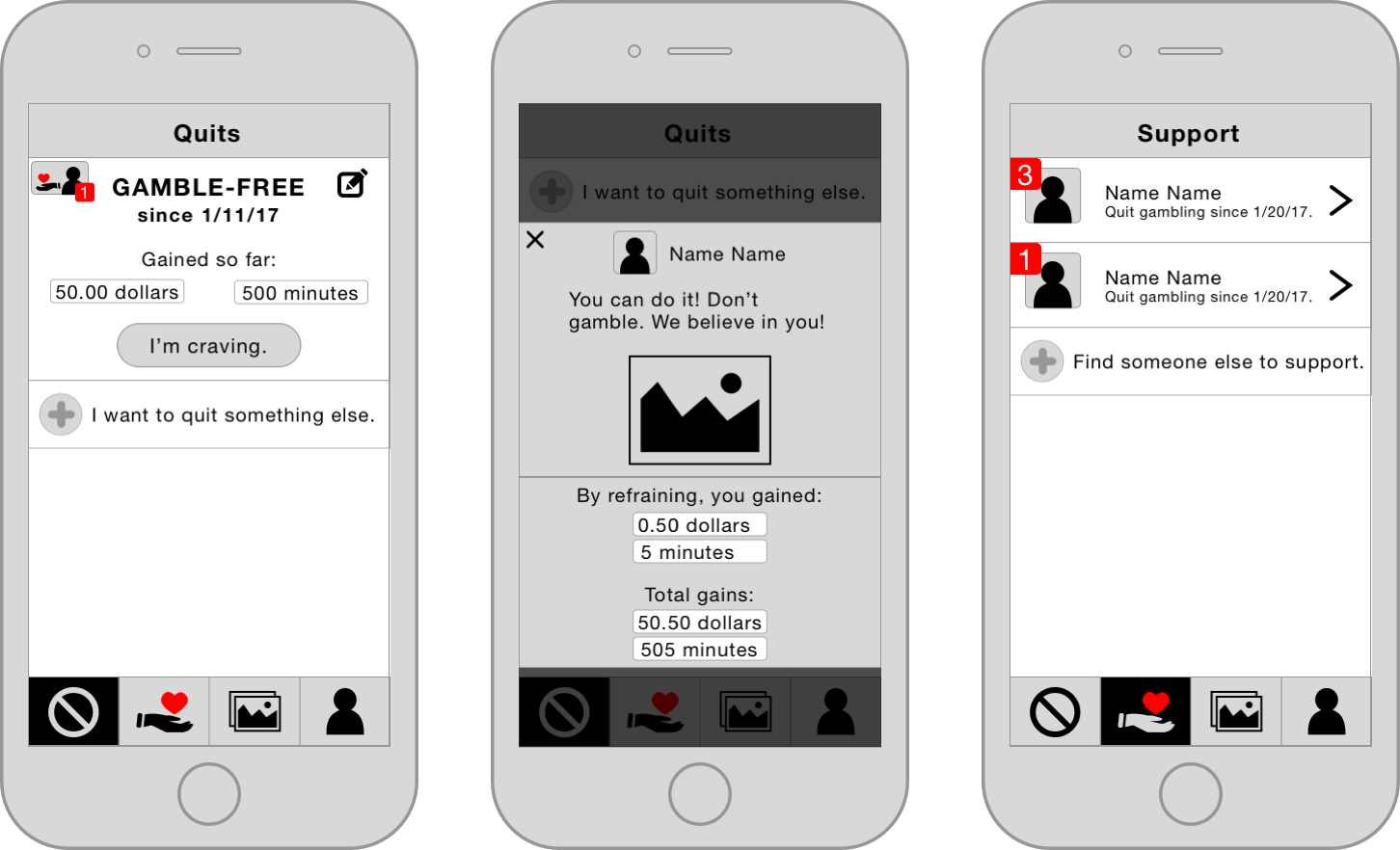
The psychologists on my team pointed out that the money saving feature, as well as the gallery, can reinforce craving. The addicted user may learn to crave more and to click the button more to collect rewards. Thus, I removed the money aspect as well as the gallery.
They also noted that reinforcing someone to refrain from a behavior is much more difficult than reinforcing someone to perform a behavior. Therefore, I added an extra step, which recommends an alternative activity for the addict to perform after craving.
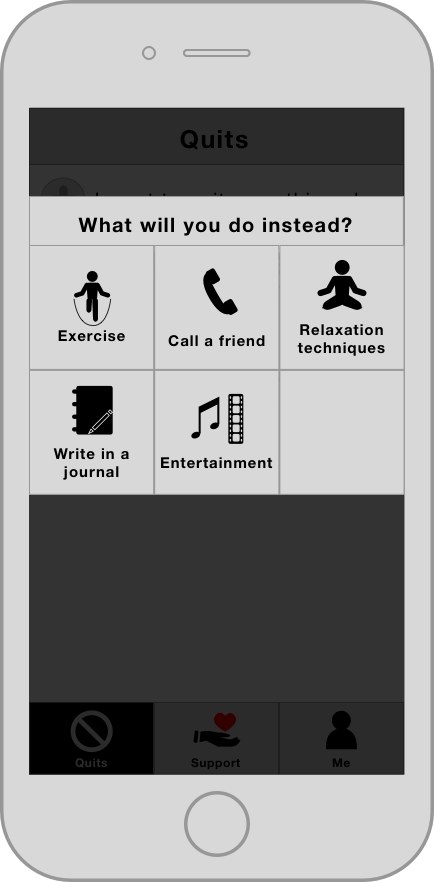
The app now focused on replacing unwanted habits by reinforcing healthy behaviors rather than just quitting.
THIRD ITERATION
After the basic functions were decided, I added some higher fidelity designs.
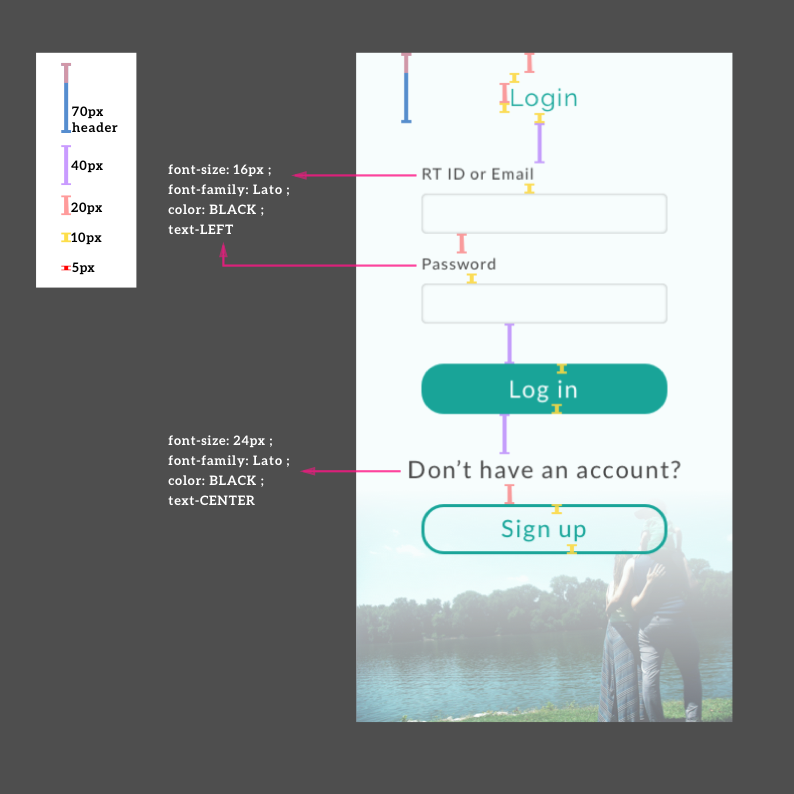
Then we discovered a new problem; users had a hard time understanding the micronetwork mechanism from just looking at the interface.
To solve this, I designed an onboarding process with tutorials.

RecoverTogether is an app to help users fight their addictive urges and to replace unwanted habits with healthy behaviors by motivating them with the reminder that they have a social support circle backing them up.
On a cross-functional team of engineers and psychologists, this product is currently in the beta testing phase.
After initial bug-testing is complete, we will work with our psychology team to start testing this app with rehabilitation centers.
